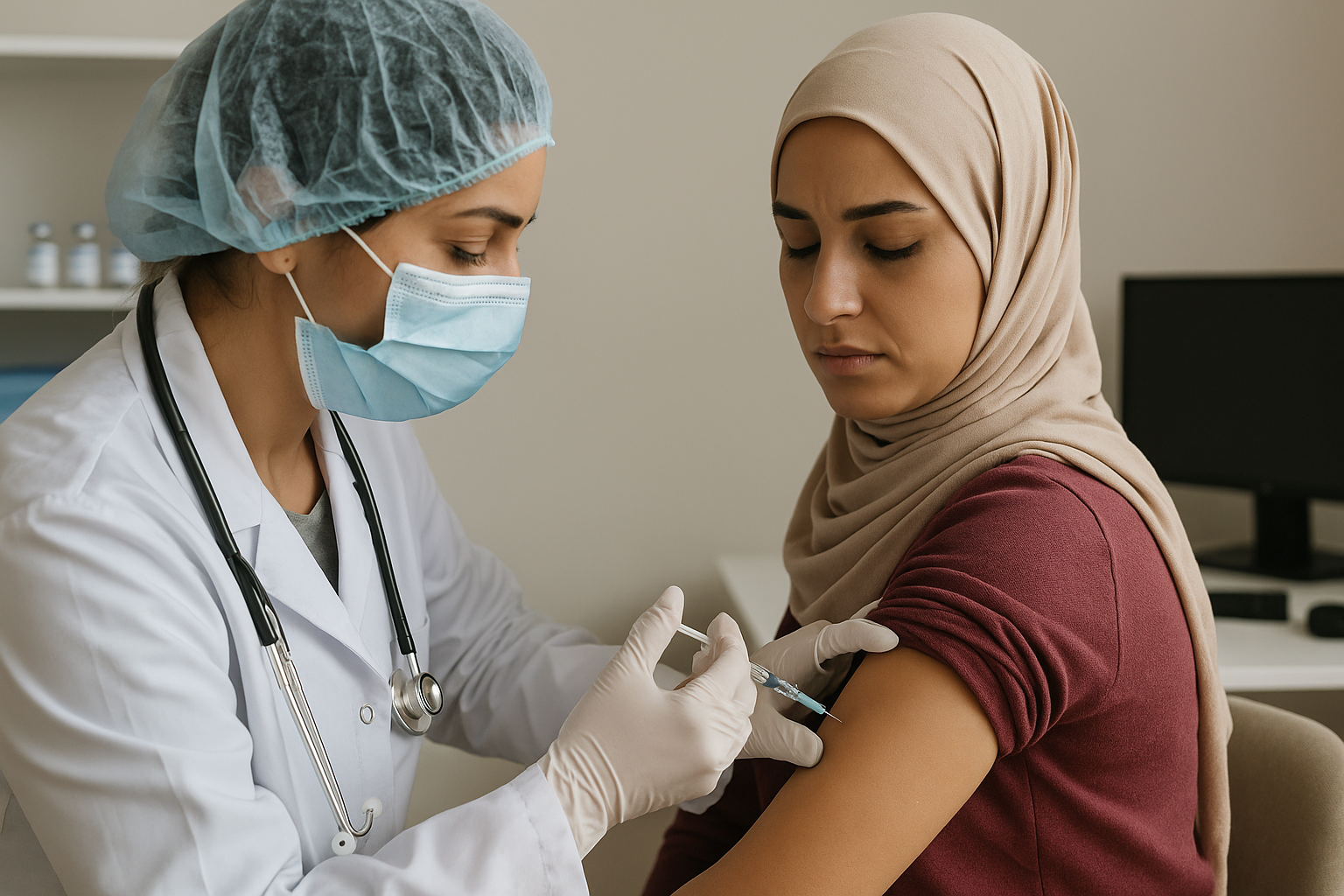Financial, supply and hesitancy barriers slow vaccine progress in MENA region
The COVID-19 pandemic had a further delaying effect, diverting health resources and political attention away from introducing new vaccines. This disruption was particularly pronounced for HPV, which saw global supply constraints at the same time.

A new regional analysis reveals stark disparities in the introduction of key vaccines across middle-income countries in the Middle East and North Africa (MENA). Published in Vaccines, the research "New Vaccine Introduction in Middle-Income Countries Across the Middle East and North Africa—Progress and Challenges," maps where and why efforts to integrate human papillomavirus (HPV), pneumococcal conjugate vaccine (PCV), and rotavirus vaccine (RV) into national immunization programmes are succeeding, and where they are falling behind.
Drawing on the READ methodology, the team reviewed policy documents, reports, literature, and conducted expert consultations to assess readiness across seven countries: Algeria, Egypt, Iran, Jordan, Lebanon, Morocco, and Tunisia. They applied a bespoke Vaccine Readiness Framework covering epidemiology, health-system capacity, financing, political economy, and local manufacturing to identify systemic barriers and enabling factors.
Which vaccines have been introduced and where haps remain
PCV is the most widely adopted of the three, with five of the seven countries having introduced it into their national programmes. Morocco, Tunisia, Algeria, Lebanon, and more recently Iran have incorporated PCV, achieving high coverage rates where data are available - Morocco and Tunisia are above 95%, while Algeria stands at nearly 90%. Egypt and Jordan have yet to introduce PCV nationally, although Jordan is preparing for a 2025 rollout.
RV is in place in four countries: Morocco, Jordan, Lebanon, and Iran. Morocco and Jordan report coverage exceeding 95%, while Lebanon’s programme, launched in 2022, is still scaling up, and Iran’s phased introduction began in 2024. Algeria, Egypt, and Tunisia have not added RV to their national schedules, with access either limited to the private market or absent entirely.
HPV stands out as the most underrepresented. Of the seven countries, only Morocco has integrated HPV into its national immunization programme, beginning in 2022. Tunisia has scheduled its introduction for 2025 with support from UNICEF and Gavi. Elsewhere, HPV is available only through private channels at high out-of-pocket costs, ranging from about USD 30 per dose in Egypt to over USD 160 in Jordan, or not available at all. Supply shortages, limited public and provider awareness, and persistent hesitancy have delayed wider adoption.
What is driving progress and delays
The study identifies a combination of epidemiological, financial, logistical, and sociocultural factors behind the uneven rollout. Disease burden data show clear justification for introducing the vaccines: rotavirus-positive gastroenteritis still causes significant illness among children in the region, pneumonia incidence remains notable among under-fives, and cervical cancer, over 95% attributable to HPV, varies in prevalence but is highest in Morocco. Yet, in many cases, policymakers lack up-to-date, country-specific epidemiological evidence, weakening the case for urgent introduction.
Financing is a central challenge. Government vaccine budgets differ widely, with Algeria, Jordan, and Iran showing recent increases, while others remain flat or modestly rising. Lebanon’s fiscal crisis forces greater reliance on non-government funding. The report notes that middle-income countries in the region often face higher vaccine prices than low-income counterparts, in part due to limited participation in pooled procurement mechanisms. Supply unpredictability compounds the problem, discouraging large-scale commitments.
International support is not being fully leveraged. Several Gavi-eligible middle-income countries in the region have yet to apply for assistance, missing opportunities for co-financing and technical guidance that could accelerate HPV and RV introduction. The authors highlight Morocco’s ability to combine domestic investment with strategic procurement partnerships, such as securing a cost-effective PCV13 supply from a new manufacturer, as an example of what can be achieved with proactive policy.
Sociocultural factors also weigh heavily, especially for HPV. Awareness campaigns are limited, and gender dynamics can influence both demand and delivery. In some contexts, vaccine decision-making norms, low prioritization of women’s health issues, and under-supported female health workers contribute to hesitancy and slow uptake.
Building capacity and overcoming barriers
Beyond financing and demand generation, structural and regulatory readiness plays a critical role. Local manufacturing capacity for newer vaccines is limited, with Egypt’s Vacsera holding the most advanced capabilities, including fill-and-finish operations for HPV and PCV. Egypt’s National Regulatory Authority is the only one among the seven at WHO maturity level 3, allowing for faster and more reliable approvals. Algeria and Tunisia’s Pasteur Institutes and Iran’s production facilities handle select vaccines, but Jordan and Lebanon have no significant domestic capacity, leaving them dependent on imports.
Private-sector roles in vaccine delivery vary dramatically, from negligible in Algeria, Iran, and Jordan to accounting for nearly half of all immunization in Tunisia and Lebanon. This diversity affects both accessibility and pricing. The study also stresses that macroeconomic pressures, conflict, and large displaced populations in several countries stretch health systems and depress coverage rates among migrants and refugees.
The COVID-19 pandemic had a further delaying effect, diverting health resources and political attention away from introducing new vaccines. This disruption was particularly pronounced for HPV, which saw global supply constraints at the same time.
The authors recommend a set of targeted actions to close gaps: strengthening National Immunization Technical Advisory Groups for evidence-based decisions; investing in local production to reduce dependence on imports; addressing hesitancy through culturally tailored communication and provider training; taking advantage of Gavi’s middle-income country support; and ensuring equitable access for vulnerable populations, particularly refugees and out-of-school children.
- FIRST PUBLISHED IN:
- Devdiscourse










